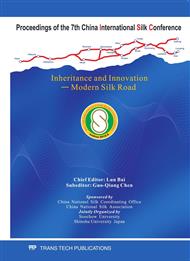p.1016
p.1024
p.1030
p.1035
p.1040
p.1045
p.1052
p.1059
p.1070
The Difference in the Service Fairness, Customer’s Participation Behavior, Relationship Quality and Relationship Performance by Consumer According to the Type of Clothing Store (Clothing Stores in Department Store versus Dongdaemun Fashion Town)
Abstract:
The purpose of this study is to find out the difference in the service fairness, customer’s participation behavior, relationship quality and relationship performance perceived by consumer according to the type of clothing store (department store versus Dongdaemun Fashion Town). The subjects of the research were men and women in their 20s and 30s who were residing in Seoul and Gyeonggi-do and who had the experience of purchasing clothing product at department store or Dongdaemun Fashion Town. Data were collected through a questionnaire survey, and a total of 424 questionnaires were used for final analysis: 213 questionnaires from the consumers who used department store, plus 211 questionnaires from those who used Dongdaemun Fashion Town. The result of this research showed that there was significant difference in all of service fairness (procedure and outcome), customer’s participation behavior (emotional participation, information participation and physical participation), relationship quality (satisfaction and trust) and relationship performance (repurchase intention, and positive word-of-mouth) perceived by consumer, according to the type of clothing store (clothing stores in department store versus Dongdaemun Fashion Town). Especially, the consumers who used the clothing stores in department store showed better perception of all the service fairness, customer’s participation behavior, relationship quality and relationship outcome. It is considered, therefore, that clothing enterprises need to establish differentiated service strategy for consumer, through the improvement of store environment and the education of salesperson that can induce more comforTable and active purchasing activity of consumers who visit store.
Info:
Periodical:
Pages:
1052-1058
Citation:
Online since:
January 2011
Authors:
Price:
Сopyright:
© 2011 Trans Tech Publications Ltd. All Rights Reserved
Share:
Citation:


